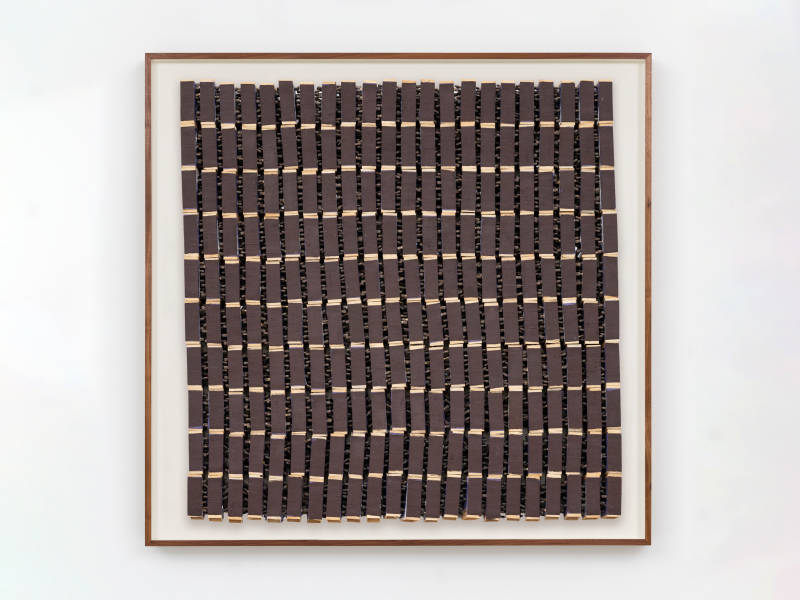
Antonio Tarsis
Untitled, 2023
guarany fósforos de segurança matchboxes & matches
61.6 x 61.5 x 6cm
About Antonio Tarsis
Antonio Tarsis has been using matchboxes as source material for his wall-based compositions for almost a decade. Within the lexicon of contemporary Brazilian art, this object is significantly present in works by such renowned artists as Lygia Clark, Fernanda Gomes. In Tarsis’ work, however, this object becomes entangled in a whole new web of social and material meanings that open up other layers of interpretative and sensorial possibilities to this existing visual trope. Having grown up in extremely impoverished conditions in his hometown of Salvador and unable to afford art materials, the artist started collecting matchboxes discarded by the crack users that were ubiquitous in his neighbourhood. This simple, almost pre-industrial object, is also still prevalent in households across the country, where often old-style cookers lack an ignition button. Tarsis is indeed interested in the social and cultural meanings attached to this material, but he is equally drawn to its formal qualities. Since the outset, the artist has tirelessly investigated and tested ways of pushing certain properties of the material in order to create extremely intricate grid-like compositions that combine rigour and improvisation. In some cases, he explores the natural discolouration of the matchbox surface when exposed to sunlight, with each individual object reaching a slightly different hue which is made perceptible when hundreds of matchboxes are placed side by side in a composition. In any case, the matchboxes are never simply used as a readymade, but rather taken apart and subjected to a labour-intensive process of preparation that involves a great deal of trial and error. In his recent works, the painterly qualities of the compositions reach a new degree of complexity and sophistication. The subtlety and rigour of some of these pieces is sometimes evocative of the work of Agnes Martin, while the more ‘expressionist’ grids made of wood chips are reminiscent of fellow Brazilian abstractionist Antonio Bandeira’s works. Other works can be described as wall reliefs, three-dimensional volumes where thousands of matches jut out of the picture plane forming tactile mass in various shades of brown, almost like an abstract pointillist painting. In each of these works, a different technique of dissecting, arranging, pigmenting the matchboxes and matches is employed to create surprising results that tap into the long history of the grid in modern art without giving up the significant history of the material itself. Tarsis has also recently developed a new series of floor sculptures first shown in São Paulo earlier this year. Titled Recipe for Disaster, these works refer to improvised cooking devices often built by people affected by homelessness or forced displacement. In some iterations of the series, the containers placed atop of these precarious assemblages are filled with industrialised sweets which can be taken by the public. Here Tarsis brings again the idea of fire – implicit in the matchboxes and pieces of charcoal that populate his compositions – as a creative and destructive force; this time bringing together the over-processed foodstuff as an index of advanced capitalist consumerism, and the precarious survival tools we may have to embrace once we all become climate change refugees. (Antonio Tarsis: The Fire Next Time, by Kiki Mazzucchelli, 2023)
INQUIRE